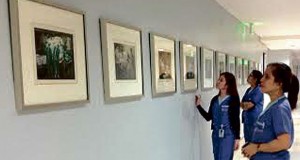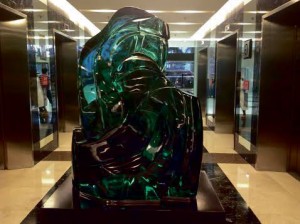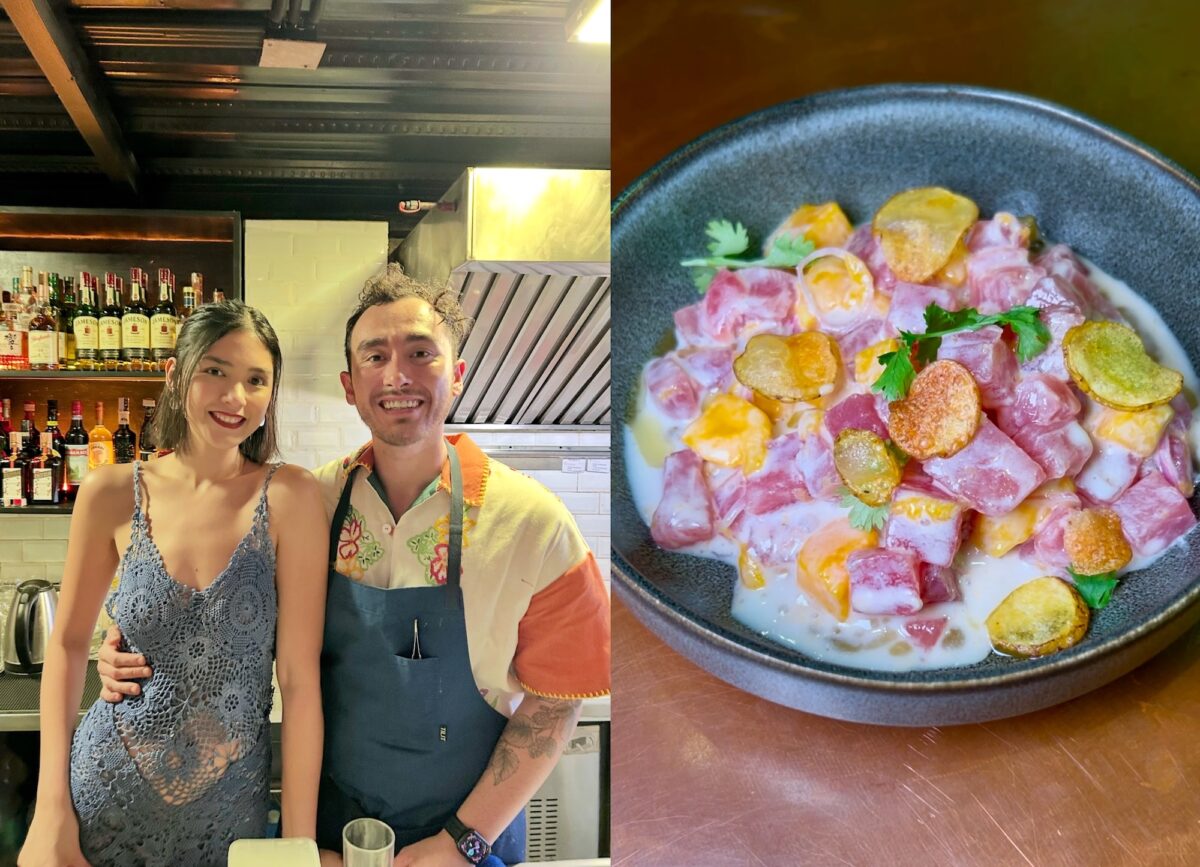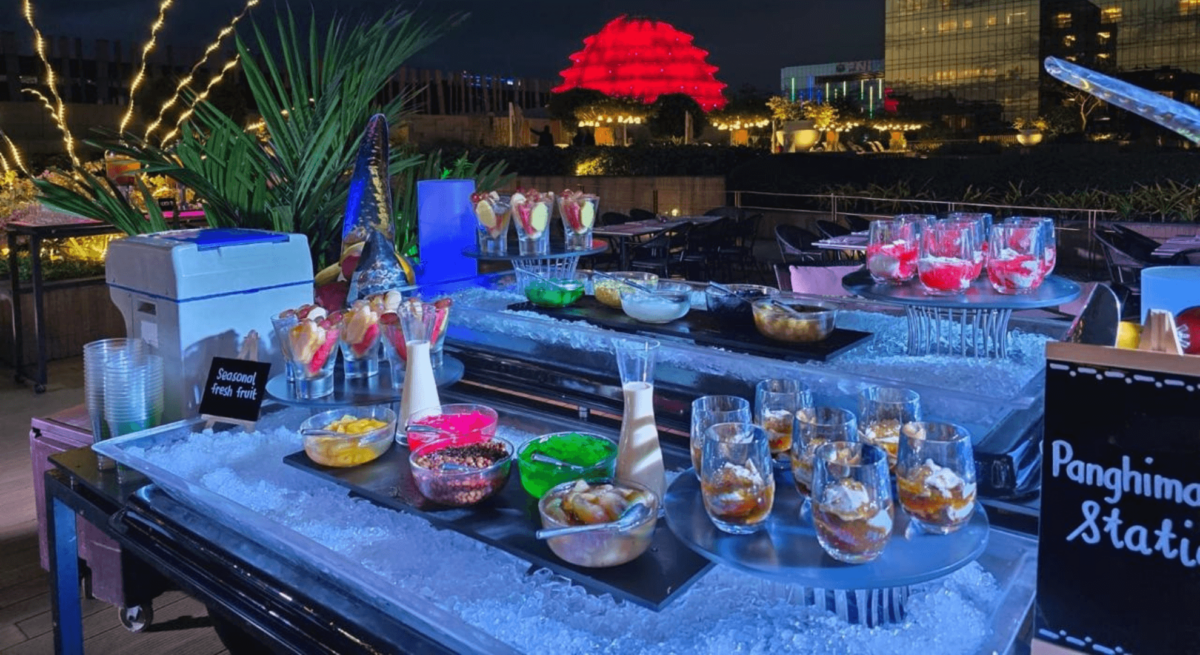


When the board of trustees of St. Luke’s Medical Center crafted the vision for the Philippine hospital to be one of the best in Asia by 2010, the bold move to build a new health-care facility in Bonifacio Global City (BGC) was conceived.
At the turn of the century, BGC was raw—a hinterland, dry and flat. A few buildings loomed near the greens at the edge of posh Forbes Park.
To the east was the C5 highway; and to somebody who was not a previous resident of Fort Bonifacio, you did not know whether you were in Makati or Taguig.
For me, BGC was somewhere between the new shopping center called Market! Market!, where the slippered folks of Pateros came close to a megamall, and the gleaming architectural wonder of IM Pei near the golf course, beside the enclave of the rich.
To the south were the neat rows of white crosses under aged acacia trees, approached by an American-named street, which the nationalist writer Carmen Guerrero Nakpil won’t ever pass. Dare to question her, and you will get a passionate lecture on how Filipinos were cheated of our independence in 1898, “engineered by this man whose name we have perpetuated in this street!”
In this setting, the second St. Luke’s was to be established. The board, the best I had ever worked with, appointed me as chief medical officer. I had my valuable lessons in corporate governance, sitting with these movers in the business world.
My CEO, the unsinkable Joe Ledesma, and I were to lead in the delivery of healthcare to a new location. We had to make better the brand that we had developed in Quezon City, to earn us the distinction of being the first to be accredited by the US-based Joint Commission International in the Philippines.
The core function of any health-care facility must always be to deliver the best clinical care that is compassionate and scientific, that results in the best of outcomes, and which every doctor, nurse, pharmacist and technician labors to achieve, day in and day out. It is the outcome that all hospital administrators must support, because we dare to take care of people in their most delicate hour of need.
Environment
I will not write about the measurable elements in excellent healthcare. Rather, I will discuss the environment we built in St Luke’s, the one that evokes a most pleasant experience for all. We consciously built one that did not look grim.
My CEO had always been passionate about transforming a hospital into a paragon of livability, “as if you are checking into a Four Seasons!” On my part, I wanted a hospital to be an oasis of wellness, the place where you want to be healed not only in body, but also in mind and spirit.
The senses must be enhanced, the colors pleasing to the eyes, evoking brainwaves of the best alpha. There must be music that “soothes the savage breast.”
The smell must remind one of a fragrant, distant field, far from the toxic fumes of the city. The windows must be wide open to let the sunshine in, and at night welcome the twilight that raises the level of the night hormone, melatonin, to induce a restful sleep.
It must be a place that soothes the anxiety and pain of being sick. I thought about how well rested one becomes, coming home to a room with a favorite painting on the wall or a sculpture on a table.
We decided to build a semblance of home in a hospital, a concept that is gaining ground in most health-care facilities around the world.
We gathered dozens of my friends in the art world to come for a meal in the lobby of the half-finished hospital, to let them know that their artworks mattered in the enhancement of health. I talked them into being part of building St. Luke’s in BGC, the first major hospital to be built in this century.
I spoke about the now-iconic works of Fernando Amorsolo, Botong Francisco, Vicente Manansala gracing buildings in the city. I proposed an art exchange, with health insurance that they and their loved ones could use, a barter of some sort in this modern age.
I saw faces light up to this unique idea!
Now, one has only to walk the corridors, linger in the halls or wait in the rooms of St. Luke’s BGC to realize how Filipino artists rallied to this call. Their works are not just decorations; they are integral to the healing process.
The hotel-like ambiance and the pictures on the walls have transformed the common idea of what a hospital should be: always uplifting.
There are numerous requests for a walk through the hospital, much like a visit to a museum, and we oblige. We are proud of our art collection, the most extensive that any hospital can own. The iconic “Lifeline” of John Santos III at the lobby is breathtaking, as is the “Five Sabels” of BenCab.
The green glass “Mother and Child” of Ramon Orlina and the white “Madonna” of Daniel dela Cruz are outstanding examples of their oeuvre. And there are the musicians of Anthony Palomo, the dancers of Sandra Gfeller, the circus riders of Elmer Borlongan.
The cool Juvenal Sanso awaits in the admitting room, as well as the iconic Malangs and the diaphanous Olazos. The Betsy Westendorp sunset is calming to passersby at the lobby, and her orchid series soothes those in the cancer clinic.
Waiting rooms
The Pam Santos installations and acrylics, as well as the lovely paintings of Esquillo, calm those in the delivery rooms. Cris Villanueva’s work dominates the walls of the waiting rooms of surgery. The swirling orbits of color of Antonio Leaño adorn the walls of the auditorium, and the wonderful art photos of shells by Wig Tysman are in the corridors to guide the passersby.
Most important of all are the Cacnios on Philippine medicine, a dozen of them all in a row. There are the impressionist landscapes of Jim Orencio, wonderful Garibays and lovely Mansits.
Erwin Leaño offers landscapes that are better than Valium.
There are hundreds of photographs done by our doctors, gracing the walls of each room. The seascapes of Francis Lopez are inspired by numerous dives in Anilao with Marilou Diaz-Abaya, filmmaker extraordinaire, a very dear friend of St. Luke’s.
There are photos by Owel Mariano, the very able neurosurgeon, and of Benjie Campomanes, documenting his travels. There are flower photographs by Antonio Comia, bird photos by Gil Vicente. There are more paintings in the wards and clinics and waiting rooms, all bearing the stamp of the genius of the Filipino.
Don Jaime Zobel de Ayala gifted the hospital with his art photos. To all these artists, we give assurance that their precious works shall be taken care of for posterity. A book on the St. Luke’s art collection is in the works.
Recently, evidence of the effect of art on brain function has been documented. What we instinctively thought should be part of the healing process has indeed proven to be so by research. Professor Semir Zeki, a pioneer in the study of neuroesthetics based in the University College of London, says that “looking at art stimulates our brain, which creates the same chemical response as when we are in love.”
Art can help people live mentally healthier lives. Scientists agree that viewing art helps reduce stress and anxiety, improves wellbeing and enhances the way we fight infection by strengthening our immune system. These effects also happen when we engage in art-making.
Viewing art and doing art release substances that serve as our brain’s own natural painkillers, our endorphins. Art also increases “bonding hormones” that help us feel a sense of trust.
Finnish scientists showed that listening to music helps stroke patients recover memory and focused attention. Cancer patients are less depressed when viewing paintings and listening to music. A study by the National Institutes of Health showed that art can improve our coping behavior.
Everyone is cautioned that art is not a substitute for medical help, but it can bring health benefits that are now slowly being discovered through research.
Neuroesthetics and neurobiology at the University College of London are focused on studying the relationship between brain activity in aesthetic appreciation and creativity. Professor Zeki’s work involves a multidisciplinary approach that brings together neuroscientists, cognitive scientists and those in the humanities, to address questions that are of deep concern to science and society.
From their studies, and those of others in the future, we will be able to learn the scientific basis for the remarkable improvements in wellbeing that we all experience with art.
Let us then make art integral to our lives. St. Luke’s lives it, and the benefits are far-reaching.
Art heals!













































